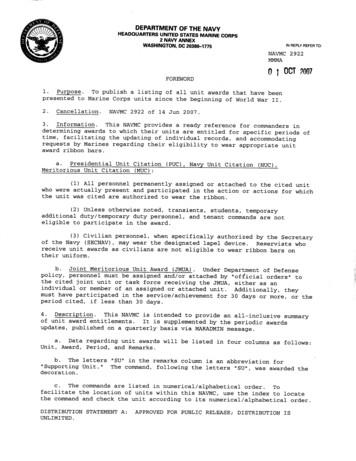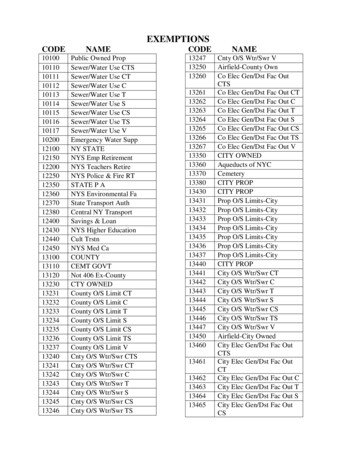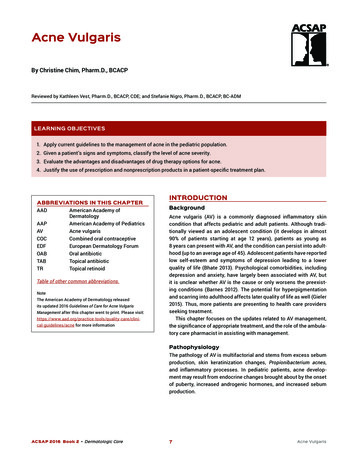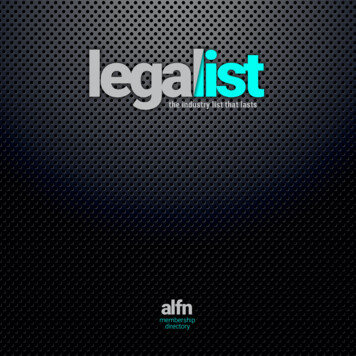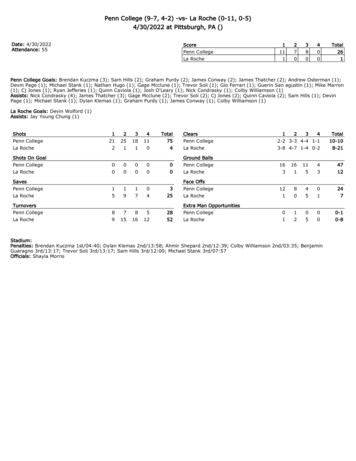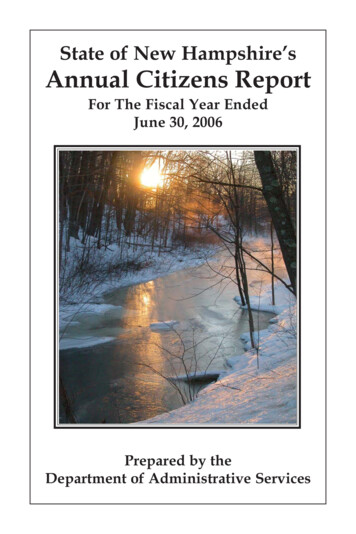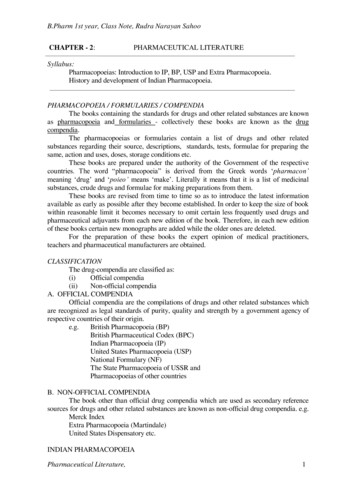
Transcription
B.Pharm 1st year, Class Note, Rudra Narayan SahooCHAPTER - 2:PHARMACEUTICAL LITERATURESyllabus:Pharmacopoeias: Introduction to IP, BP, USP and Extra Pharmacopoeia.History and development of Indian Pharmacopoeia.PHARMACOPOEIA / FORMULARIES / COMPENDIAThe books containing the standards for drugs and other related substances are knownas pharmacopoeia and formularies - collectively these books are known as the drugcompendia.The pharmacopoeias or formularies contain a list of drugs and other relatedsubstances regarding their source, descriptions, standards, tests, formulae for preparing thesame, action and uses, doses, storage conditions etc.These books are prepared under the authority of the Government of the respectivecountries. The word “pharmacopoeia” is derived from the Greek words ‘pharmacon’meaning ‘drug’ and ‘poieo’ means ‘make’. Literally it means that it is a list of medicinalsubstances, crude drugs and formulae for making preparations from them.These books are revised from time to time so as to introduce the latest informationavailable as early as possible after they become established. In order to keep the size of bookwithin reasonable limit it becomes necessary to omit certain less frequently used drugs andpharmaceutical adjuvants from each new edition of the book. Therefore, in each new editionof these books certain new monographs are added while the older ones are deleted.For the preparation of these books the expert opinion of medical practitioners,teachers and pharmaceutical manufacturers are obtained.CLASSIFICATIONThe drug-compendia are classified as:(i)Official compendia(ii)Non-official compendiaA. OFFICIAL COMPENDIAOfficial compendia are the compilations of drugs and other related substances whichare recognized as legal standards of purity, quality and strength by a government agency ofrespective countries of their origin.e.g.British Pharmacopoeia (BP)British Pharmaceutical Codex (BPC)Indian Pharmacopoeia (IP)United States Pharmacopoeia (USP)National Formulary (NF)The State Pharmacopoeia of USSR andPharmacopoeias of other countriesB. NON-OFFICIAL COMPENDIAThe book other than official drug compendia which are used as secondary referencesources for drugs and other related substances are known as non-official drug compendia. e.g.Merck IndexExtra Pharmacopoeia (Martindale)United States Dispensatory etc.INDIAN PHARMACOPOEIAPharmaceutical Literature,1
B.Pharm 1st year, Class Note, Rudra Narayan SahooHistoryThe historical developments of Pharmacopoeia in India traces back to 1563 and thecredit goes to Garcia da Orta a Portugese physician-cum-teacher.The idea of indigeneous Indian Pharmacopoeia was concieved in 1837 which borefruits in 1841 in the shape of Bengal Pharmacopoeia and Conspectus of Drugs.The hindustani version in Bengali and Hindi of London Pharmacopoeia was madeavailable in India from 1901 onwards.The Indian Pharmacopoeial List, published in 1946 formed the seeding for the trueOfficial Indian Pharmacopoeia published in 1955.The first edition of Indian Pharmacopoeia was published in 1955, but actually theprocess was started as early as 1944. In 1944 Government of India asked the DrugsTechnical Advisory Board to prepare the list of drugs used, in India, having sufficientmedicinal value to justify their inclusion in official pharmacopoeia.The Indian Pharmacopoeial List, 1946.The list of drugs both included and not included in the British Pharmacopoeia alongwith standards to secure their usefulness, tests for identity and purity was prepared by thecommittee and was published by the Government of India under the name ‘The IndianPharmacopoeial List 1946’.The committee constituted under the chairmanship of Col. Sir R.N.Chopra along withother nine members, prepared the list of drugs with the following details:Substances included in the British Pharmacopoeia for crude drugs, chemicals and theirpreparations.Substances not included in the British pharmacopoeiaa)Drugs of plant originb)Drugs of animal originc)Biological productsd)Insecticidese)Colouring agentsf)Syntheticsg)Miscellaneoush)Drugs for veterinary use.The Indian Pharmacopoeial List 1946 was prepared by Department of Health, Govt. of Indiain 1946.The history of development of Indian Pharmacopoeia:YearEvents1946The Govt. of India published the Indian Pharmacopoeial List.1948The Govt. of India constituted a permanent Indian Pharmacopoeia Committee.This committee was assigned the task of preparing Indian Pharmacopoeia andto keep it up-to-date.1955The first edition of Indian Pharmacopoeia (IP) was published.1960* Supplement of IP 1955 was published.N.B. The work of revision of the Indian Pharmacopoeia as well as compilation ofnew edition was taken up simultaneously under the chairmanship of Dr.B.N.Ghosh, who died in 1958. After Dr. B.N.Ghosh, Dr. B.Mukherjee, theDirector of Central Drug Research Institute was appointed as the chairman ofIndian Pharmacopoeia committee.1966*The second edition of IP was published.Pharmaceutical Literature,2
B.Pharm 1st year, Class Note, Rudra Narayan Sahoo197519781985198919911996*A supplement of IP 1966 was published.The Indian Pharmacopoeia Committee was reconstituted by the Govt. of India,Ministry of Health and Family Welfare, under the chairmanship of Dr. NityaNand, Director, Central Drug Research Institute, Lucknow.The third edition of IP was published in two volumes, Volume-I and VolumeII by the Controller of Publications, on behalf of Govt. of India, Ministry ofHealth and Family Welfare.Volume-I contains:Legal Notices, Preface, Acknowledgments, Introduction, General Notices, andMonographs from A to P.Volume-II contains:Monographs from Q to Z, Appendices, Contents of Appendices and Index.Addendum (I) to IP 1985 was published.Addendum (II) to IP 1985 was published.The fourth edition of IP was published.For the preparation of Pharmacopoeia of India, the pharmacopoeias of other countries,like British, Europe, United States, USSR, Japan, the National Formulary (USA) and MerckIndex were consulted. The persons working in pharmaceutical industry, drug controllaboratories, research and teaching institutions also actively participated.Under the Drugs and Cosmetics Act 1940, the Indian Pharmacopoeia is an officialbook which contains the standards for drugs and other related substances included in thepharmacopoeia. The drugs and other related substances prepared by pharmaceuticalmanufacturers must comply with these standards.VARIOUS OFFICIAL PUBLICATIONS RELATED TO PHARMACY PROFESSION ININDIA1. NATIONAL FORMULARY OF INDIAFor the guidance of medical practitioners, medical students and pharmacists inhospitals and in sales departments National Formulary of India has been formulated.1960 First edition was published by Govt. of India, Ministry of Health.1966 Second edition was published.1979 Third edition was published.It contains information about drug interaction, resistance, cumulative effects, drugdependence, prescription writing etc.2. THE INDIAN PHARMACOPOEIAUnder the Drugs and Cosmetics Act 1940, the Indian Pharmacopoeia is an officialbook which contains the standards for drugs and other related substances included in thePharmacopoeia. The drugs and other related substances prepared by pharmaceuticalmanufacturers must comply with these standards.1946 Indian Pharmacopoeial List was published by Govt. of India.1955 First edition of Indian Pharmacopoeia was published.1960 Supplement of IP 1955 was published.1966 Second edition of IP was published.1975 Supplement of IP 1966 was published.1985 Third edition of IP was published.1989 Addendum-I to IP 1985 was published.1991 Addendum-II to IP 1985 was published.Pharmaceutical Literature,3
B.Pharm 1st year, Class Note, Rudra Narayan Sahoo1996 Fourth edition of IP was published.Under each monograph chemical structures, molecular weight, physical description,solubility, identification tests, standards, assay method, storage etc. are given. IndianPharmacopoeia is published by the Controller of Publications, Delhi on behalf of Govt. ofIndia, Ministry of Health and Family Welfare.3. THE BRITISH PHARMACOPOEIA (BP)Under the Medical Act 1858 the General Council of Medical Education andRegistration was empowered to alter, amend and republish the British Pharmacopoeia (BP) asoften as necessary. The first BP was published in 1964.1864 The first BP was published.1926 Committee of Civil Research recommended that a PharmacopoeiaCommission be formed and it should be entrusted the work of new editions ofBP and also recommended that BP be revised and reissued at an interval of tenyears.1932 New edition of BP was published according to the above recommendation.1968 Medicines Act 1968 gave the responsibility of preparing the BP to theMedicines Commission. Medicines Commission reconstituted the BritishPharmacopoeia Commission and gave the responsibility to BritishPharmacopoeia Committee.1980 The thirteenth edition of BP was [published.1988 The 14th edition of BP was published.1993 The 15th edition of BP was published.BP 1988 contains two volumes with 2100 monographs:Vol-I contains monographs on medicinal and pharmaceutical substances along with Infrared (IR) reference spectra.Vol-II contains formulated preparations, blood products, immunological products, radiopharmaceutical preparations, surgical materials and appendices.BP is the source of standards of drugs in United Kingdom and other parts of Common WealthCountries.4. BRITISH PHARMACEUTICAL CODEX (BPC)It was in 1903 that the council of Pharmaceutical Society of Great Britain decided toprepare a reference book for the use of medical practitioners and dispensing pharmacists. Thefirst edition of BPC was published in 1907.On the request of British Pharmacopoeia Commission, the Council of thePharmaceutical Society agreed in 1959 for the publication of Codex to coincide with that ofthe BP, so that BP and BPC should come into effect on the same date.The BPC differs from BP in that :a) It contains many more drugs and preparations some may be included in advance to thepharmacopoeia while other drugs may have been included in the former editions ofpharmacopoeia but now they are retained in the Codex because they are still commonlyused.b) It provides information on the actions and uses of drugs, their undesirable effects,precautions and the treatment of poisoning.c) It contains formulae, method of preparation, container and storage conditions of most ofthe preparations which are still extemporaneously prepared in the pharmacy.5. THE UNITED STATES PHARMACOPOEIA (USP)Pharmaceutical Literature,4
B.Pharm 1st year, Class Note, Rudra Narayan SahooThe USP was originally published in 1820 under the authority of United StatesPharmacopoeial Convention. The National Formulary (NF) was published in 1888 under theguidance of American Pharmaceutical Association.In 1974 the NF was purchased by the United States Pharmacopoeial Convention andfrom 1980 onwards only one official book of drug standards was published under the headingThe United States Pharmacopoeia and The National Formulary (USP-NF).6. EXTRA PHARMACOPOEIAThe Extra Pharmacopoeia was first produced in 1883 by William Martindale and isstill known as ‘Martindale’. This is an authorized reference book on drugs and is usedthroughout the world. It provides all sorts of latest information on drugs and medicines. It ispublished by the direction of the Council of the Royal Pharmaceutical Society of GreatBritain and prepared in the Society’s Department of Pharmaceutical Sciences.7. THE MERCK INDEXIt is an encyclopaedia of chemicals, drugs and biologicals. The first edition waspublished in 1989 and the eleventh edition was published in 1989 by Merck & Co., Inc.Rahway, New Jersy, USA.8. THE INTERNATIONAL PHARMACOPOEIAThe International Pharmacopoeia is published by the World Health Organization andis particularly used in developing countries. The first edition was published in 1951 (VolumeI) and in 1955 (Volume-II).The object of this was to provide a uniform list which would avoid the confusioncaused by different national standards, strengths and names especially for the use of travelerswho might need to use the same prescription in different countries.Pharmaceutical Literature,5
The United States Pharmacopoeia and The National Formulary (USP-NF). 6. EXTRA PHARMACOPOEIA The Extra Pharmacopoeia was first produced in 1883 by William Martindale and is still known as 'Martindale'. This is an authorized reference book on drugs and is used throughout the world. It provides all sorts of latest information on drugs and .
